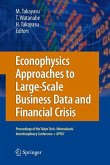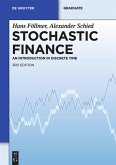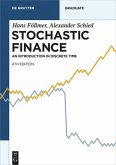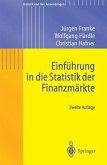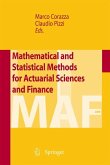The book deals with propagation of errors on data through mathematical models with applications in finance and physics. It is interesting for scientists and practitioners when studying the sensitivity of their models to small changes in the hypotheses. The book differs from what is usually done in sensitivity analysis because it yields powerful new tools allowing to manage errors in stochastic models as those used in modern finance.
Many recent advances in modelling within the applied sciences and engineering have focused on the increasing importance of sensitivity analyses. For a given physical, financial or environmental model, increased emphasis is now placed on assessing the consequences of changes in model outputs that result from small changes or errors in both the hypotheses and parameters. The approach proposed in this book is entirely new and features two main characteristics. Even when extremely small, errors possess biases and variances. The methods presented here are able, thanks to a specific differential calculus, to provide information about the correlation between errors in different parameters of the model, as well as information about the biases introduced by non-linearity. The approach makes use of very powerful mathematical tools (Dirichlet forms), which allow one to deal with errors in infinite dimensional spaces, such as spaces of functions or stochastic processes. The method is therefore applicable to non-elementary models along the lines of those encountered in modern physics and finance. This text has been drawn from presentations of research done over the past ten years and that is still ongoing. The work was presented in conjunction with a course taught jointly at the Universities of Paris 1 and Paris 6. The book is intended for students, researchers and engineers with good knowledge in probability theory.
Hinweis: Dieser Artikel kann nur an eine deutsche Lieferadresse ausgeliefert werden.
Many recent advances in modelling within the applied sciences and engineering have focused on the increasing importance of sensitivity analyses. For a given physical, financial or environmental model, increased emphasis is now placed on assessing the consequences of changes in model outputs that result from small changes or errors in both the hypotheses and parameters. The approach proposed in this book is entirely new and features two main characteristics. Even when extremely small, errors possess biases and variances. The methods presented here are able, thanks to a specific differential calculus, to provide information about the correlation between errors in different parameters of the model, as well as information about the biases introduced by non-linearity. The approach makes use of very powerful mathematical tools (Dirichlet forms), which allow one to deal with errors in infinite dimensional spaces, such as spaces of functions or stochastic processes. The method is therefore applicable to non-elementary models along the lines of those encountered in modern physics and finance. This text has been drawn from presentations of research done over the past ten years and that is still ongoing. The work was presented in conjunction with a course taught jointly at the Universities of Paris 1 and Paris 6. The book is intended for students, researchers and engineers with good knowledge in probability theory.
Hinweis: Dieser Artikel kann nur an eine deutsche Lieferadresse ausgeliefert werden.




